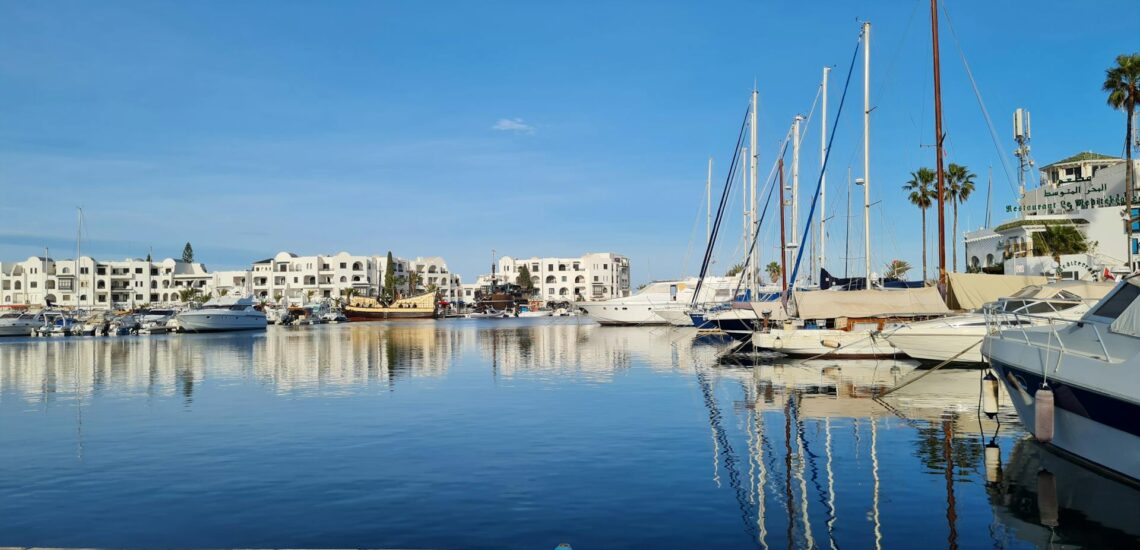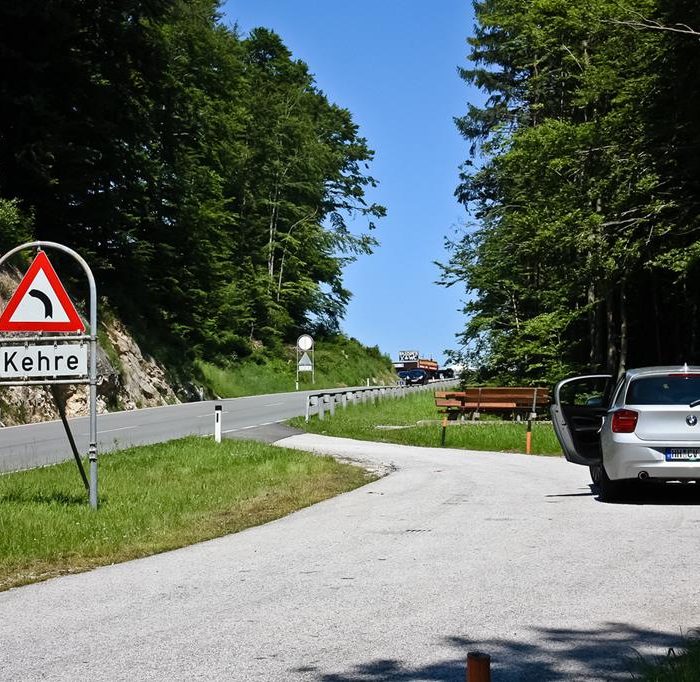关于突尼斯的简要信息:
- 人口:约 1200 万人。
- 首都:突尼斯。
- 最大城市:突尼斯。
- 官方语言:阿拉伯语。
- 其他语言:法语也被广泛使用。
- 货币:突尼斯第纳尔 (TND)。
- 政府:单一制半总统共和国。
- 主要宗教:伊斯兰教,主要为逊尼派。
- 地理:位于北非,西部和西南部与阿尔及利亚接壤,东南部与利比亚接壤,北部和东部与地中海接壤。
事实 1:突尼斯是非洲最北端的国家
其最北端安吉拉角伸入地中海,使突尼斯成为非洲和欧洲之间的重要门户。这一战略位置在历史上促进了突尼斯丰富的文化交流、贸易和来自腓尼基人、罗马人和阿拉伯人等各种文明的影响。该国的地中海气候和沿海风光也增强了其作为旅游目的地的吸引力,吸引游客前往其历史名城、海滩和考古遗址。
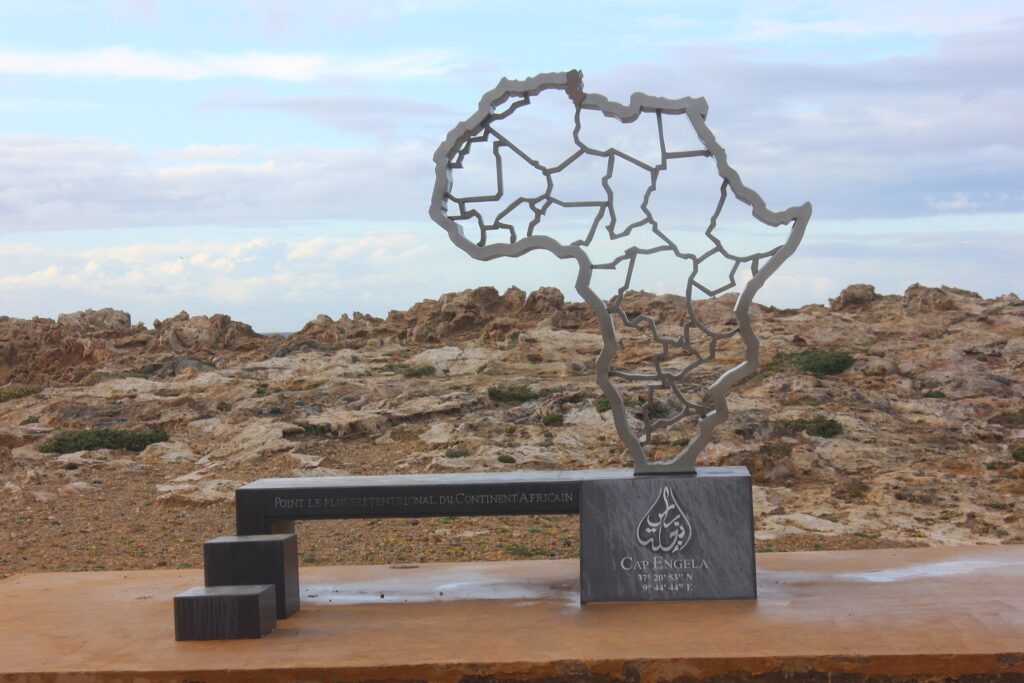
事实 2:突尼斯发起了“阿拉伯之春”
众所周知,突尼斯是“阿拉伯之春”的发起国,这是一波始于 2010 年底的抗议和政治动荡浪潮。这场运动始于年轻街头小贩穆罕默德·布瓦吉吉为抗议警察腐败和虐待而自焚。他的反抗行为引发了突尼斯各地的大规模示威游行,最终导致执政 23 年的总统齐纳·阿比丁·本·阿里下台。
突尼斯抗议活动的成功激发了其他阿拉伯国家的类似运动,包括埃及、利比亚、叙利亚和也门,人们走上街头要求政治改革、经济机会和更大的自由。这些抗议活动推翻了几个长期存在的政权,并引发了该地区的重大政治和社会变革,尽管各国的结果各不相同。
事实 3:突尼斯是古代迦太基的首都
突尼斯是古代迦太基城的所在地,迦太基曾是强大的迦太基帝国的首都,也是罗马的强大对手。迦太基由腓尼基定居者于公元前 9 世纪建立,成为地中海地区的主要贸易和军事中心。
这座城市也许以与罗马的冲突而闻名,尤其是公元前 264 年至公元前 146 年的布匿战争。这些战争以传奇军事领袖为标志,例如汉尼拔,他率军翻越阿尔卑斯山向罗马发起挑战。
尽管迦太基实力强大、坚韧不拔,但最终在公元前 146 年第三次布匿战争后被罗马攻陷。罗马人摧毁了这座城市,后来重建为罗马殖民地,成为罗马帝国最重要的城市之一。
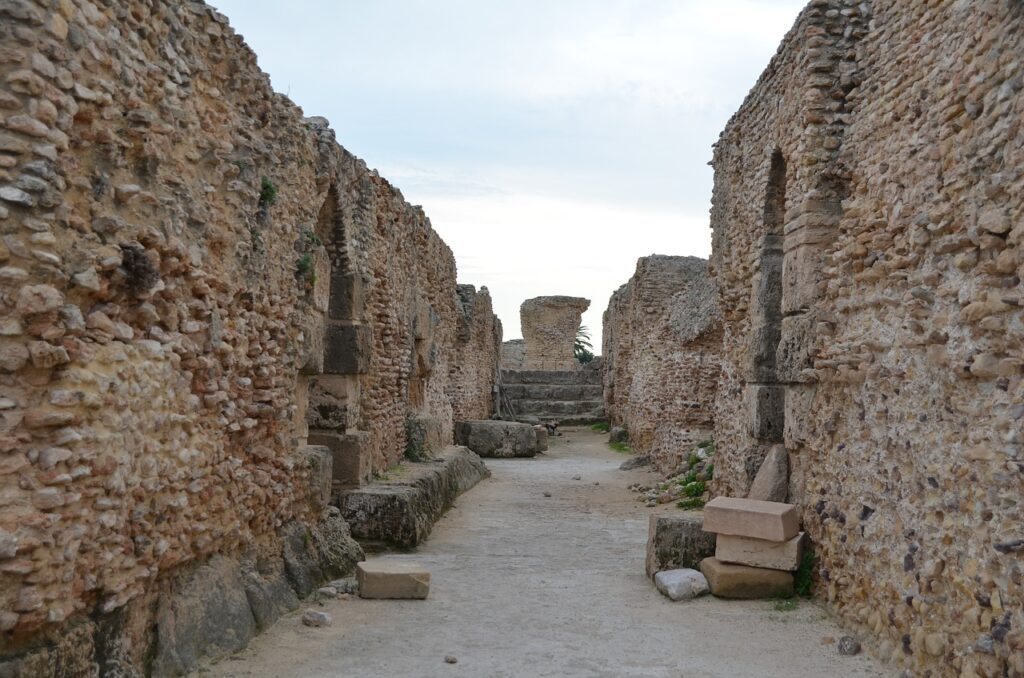
事实 4:突尼斯的供水系统非常发达
迦太基以及该地区后来的罗马城市都拥有先进的工程奇迹,可以有效管理水资源以支持城市人口和农业。
最显著的例子之一是扎格万渡槽,它建于公元 2 世纪,用于从 130 多公里外的扎格万山泉向迦太基供水。这一令人印象深刻的工程壮举包括渡槽桥、隧道和水库,展示了罗马人在水利工程方面的精湛技艺。
这些系统确保了可靠的淡水供应,用于饮用、沐浴、灌溉和公共浴室,为居民的繁荣和日常生活做出了重大贡献。这些渡槽和供水基础设施的遗迹证明了突尼斯古代工程师的聪明才智和技术技能。
事实 5:凯鲁万是穆斯林的重要城市
凯鲁万由阿拉伯将军乌克巴·伊本·纳菲于公元 670 年建立,很快成为北非伊斯兰学习和文化的中心。它被认为是继麦加、麦地那和耶路撒冷之后的伊斯兰教第四大圣城。
这座城市最具标志性的地标是凯鲁万大清真寺,也被称为乌克巴清真寺。这座历史悠久的清真寺拥有巨大的祈祷大厅、高耸的尖塔和宽敞的庭院,是穆斯林世界最古老、最重要的清真寺之一。它已成为该地区其他清真寺的典范,仍然是朝圣和宗教研究的重要场所。
凯鲁万的重要性不仅限于其宗教遗产。它是一个重要的贸易、学术和手工艺中心,尤其以生产精美的地毯和纺织品而闻名。这座城市丰富的历史和文化贡献使其在联合国教科文组织世界遗产名录中占有一席之地。
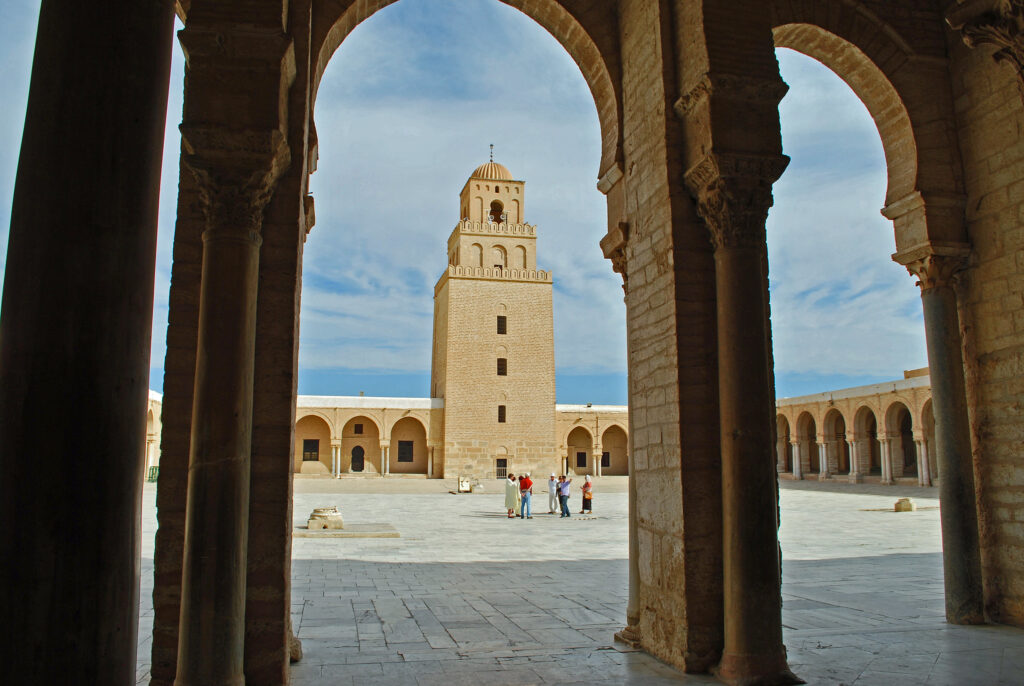
事实 6:蒸粗麦粉是最受欢迎的菜肴
这种用途广泛的菜肴由蒸过的粗粒小麦粉制成,通常与富含肉类(如羊肉、鸡肉或鱼肉)、蔬菜和多种芳香香料混合而成的浓汤一起食用。蒸粗麦粉在突尼斯美食中占据着中心地位,经常出现在家庭聚会、庆祝活动和特殊场合。
在冬季,突尼斯人会享用一种名为“lablabi”的特殊菜肴。这道丰盛而温暖的菜肴是一种鹰嘴豆汤,用大蒜、孜然和哈里萨辣酱(一种辣酱)调味。Lablabi 传统上与浸泡在肉汤中的隔夜面包块一起食用,上面通常放着水煮蛋、橄榄、刺山柑和少许橄榄油。这道菜在寒冷的季节特别受欢迎,因为它既温暖又营养。
事实 7:突尼斯拥有受游客欢迎的优质海滩
突尼斯以其美丽而受欢迎的海滩而闻名,吸引了来自世界各地的游客。该国的地中海海岸线绵延 1,300 多公里,拥有各种迷人的海滩,可满足不同的品味和喜好。
- 哈马马特:哈马马特以其金色的沙滩和清澈的蓝色海水而闻名,是突尼斯最著名的度假胜地之一。它融合了充满活力的夜生活、豪华度假村和历史遗迹,是放松和探索的热门目的地。
- 苏塞:苏塞通常被称为“萨赫勒明珠”,拥有美丽的海滩,两旁种满棕榈树,气氛热闹。这座城市也是联合国教科文组织世界遗产麦地那的所在地,为海滩体验增添了丰富的文化气息。
- 杰尔巴岛:这个位于突尼斯南部的岛屿以其风景如画的海滩、平静的海水和迷人的传统村庄而闻名。杰尔巴岛深受寻求更宁静、更悠闲环境的游客的欢迎。
- 莫纳斯提尔:莫纳斯提尔拥有原始的海滩和历史意义,是一个受欢迎的旅游景点。这座城市将美丽的海岸景色与莫纳斯提尔里巴特(一座古老的伊斯兰堡垒)等景点融为一体。
- 马赫迪耶:马赫迪耶以人少、更宁静的海滩而闻名,拥有细白的沙滩和碧绿的海水,是一处宁静的度假胜地。对于那些想要逃离喧嚣的人来说,这里是理想之地。
- 纳布勒:纳布勒位于哈马马特附近,以其绵延的沙滩和热闹的当地市场而闻名。这里是享受海滩和体验当地手工艺品和陶器的绝佳目的地。
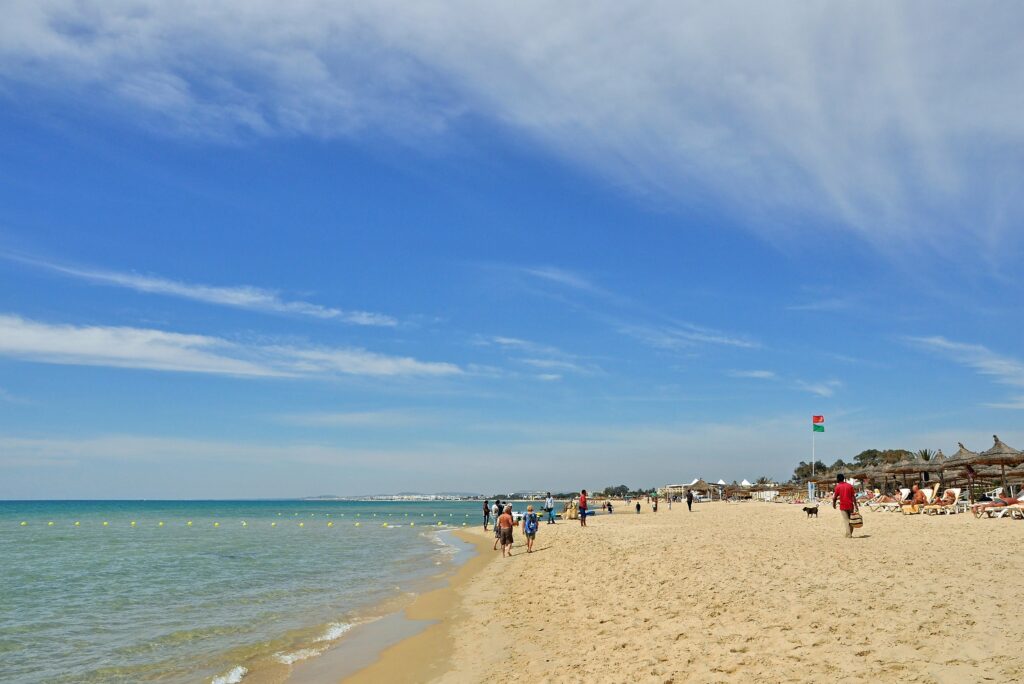
事实 8:为保护自然,突尼斯建立了 17 个国家公园
为保护其丰富的自然遗产,突尼斯建立了 17 个国家公园,每个公园都拥有独特的景观和多样化的野生动物。以下是一些最受欢迎的国家公园:
伊奇克乌尔国家公园:伊奇克乌尔国家公园是联合国教科文组织世界遗产,以伊奇克乌尔湖为中心,是候鸟的重要中途停留地。这里栖息着数千种鸟类,包括火烈鸟和鹳,是观鸟者和自然爱好者的天堂。
杰比尔国家公园:杰比尔国家公园位于撒哈拉沙漠,拥有广阔的沙丘和干旱的景观。它为多卡瞪羚和耳廓狐等适应沙漠的物种提供了栖息地,让游客可以一睹撒哈拉独特的动植物群。
布希德马国家公园:该公园位于突尼斯中部,保护草原和森林生态系统。这里是阿达克斯羚羊和巴巴里羊等珍稀物种的家园,是野生动物保护的重要场所。
泽姆布拉和泽姆布雷塔国家公园:这个海洋公园由地中海的两个岛屿组成,以其海鸟群和水下生物多样性而闻名。它吸引了潜水员和自然爱好者来探索其丰富的海洋生物。
注意:如果您正在计划旅行,请查看在突尼斯租车和驾驶汽车是否需要国际驾照。
事实 9:突尼斯的麦地那区以其众多古迹而闻名
突尼斯的麦地那区以其丰富的历史古迹和文化遗产而闻名。突尼斯麦地那是联合国教科文组织世界遗产,是一个迷宫般的地区,拥有 700 多座历史古迹,包括宫殿、清真寺、陵墓和宗教学校。著名地标包括扎伊图纳清真寺(穆斯林世界最古老、最重要的清真寺之一)和达尔侯赛因宫(体现了突尼斯传统的建筑风格)。
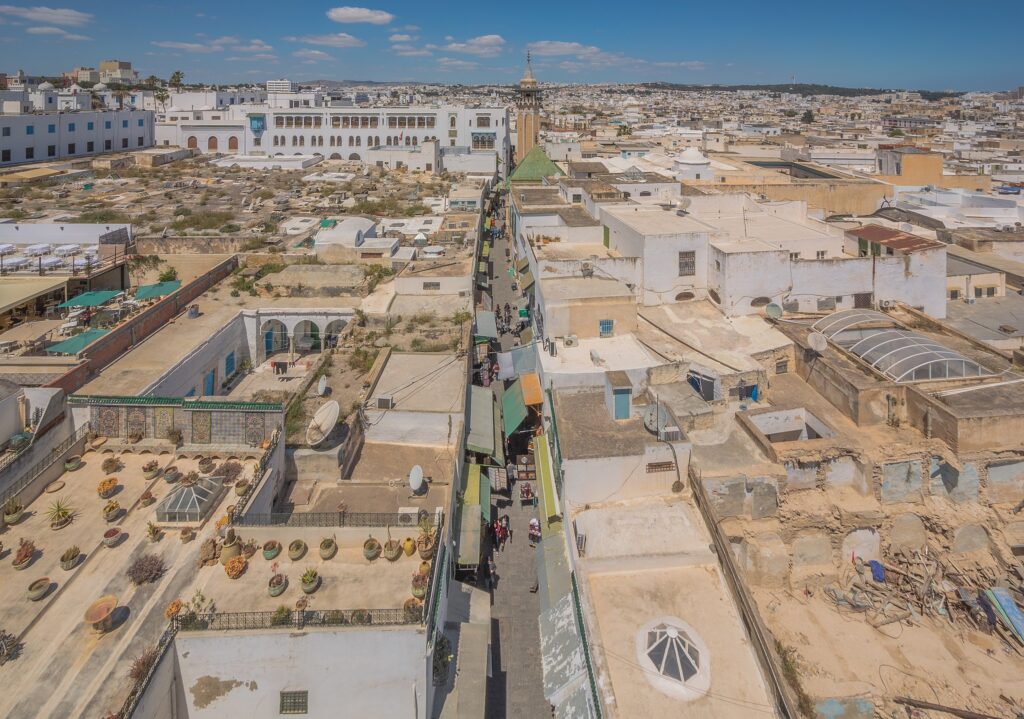
事实 10:最大的罗马圆形剧场位于突尼斯
埃尔杰姆是令人印象深刻的埃尔杰姆圆形剧场的所在地,也被称为 Thysdrus 圆形剧场,它是世界上保存最完好的罗马圆形剧场之一。
埃尔杰姆圆形剧场建于公元 3 世纪左右,当时是罗马帝国在北非的鼎盛时期,可容纳多达 35,000 名观众。它主要用于角斗士比赛和其他公共表演,反映了罗马社会的宏伟和娱乐文化。
圆形剧场结构庞大,墙壁高耸,拱门错综复杂,是罗马工程实力的证明。它经常因其规模和建筑意义而与罗马斗兽场相提并论。 1979年,艾尔杰姆露天剧场被联合国教科文组织列为世界遗产,以表彰其文化和历史重要性。

出版 六月 29, 2024 • 3m

